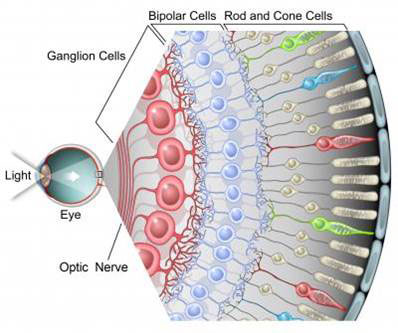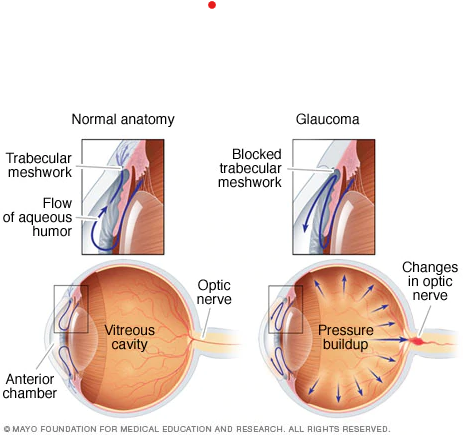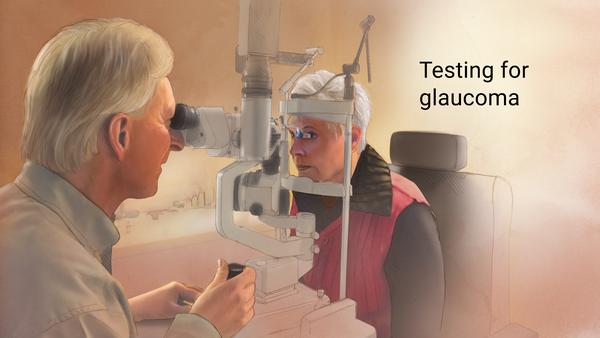Glaucoma stricken patients can rejoice at the recent strides made to understand the genetic and biological underpinnings of the world’s second-leading cause of blindness. The disease, affecting 70-80 million people worldwide, has no known cure, and ultimately leads to blindness for those stricken, despite the world’s best efforts. That is, until now. Scientists around the world from Australia to the United States have recently unveiled inspiring findings that may yield novel methods of preventative care, and, eventually, a path to a cure.
A collaboration between world-class universities has yielded unprecedented results with a potential cure of glaucoma in animal trials. So much so that the University of Toronto and the University of California, Berkeley, have filed for a patent for the treatment. The senior authors John Flanagan, and Karsten Gronert, from the University of California Berkeley, utilized naturally occurring, small fatty molecules to reduce degeneration of nervous tissue in the eye and cure rodents of glaucoma-related neurodegeneration.

These fatty molecules, lipoxins, known for their inflammation-regulating potential, were shown to reduce and stop the degeneration of retinal ganglion cells in mice and rats with glaucoma. Retinal ganglion cells connect the retina to the photoreceptors in the eye, an essential connection for retaining full functioning of the eye. These anti-inflammatory lipoxins, secreted from the most common type of glial cell in the brain, were shown in this investigation to play a role in neuroprotection.

Astrocytes are commonly thought to injure ganglion cells by releasing stress signals. Though, Flanagan’s research has discovered unexpectedly that “astrocytes that are triggered by injury actually turn off neuroprotective signals that prevent optic nerve damage.” Two variants of lipoxins were discovered to be secreted from resting astrocytes in the retina and at the head of the optic nerve. Considering that these astrocytes weren’t encountering any stress signals when releasing these lipoxins, the researchers thought that these lipoxins may have a role in enhancing neuroprotection and reducing optic nerve damage.
This discovery led the researchers to isolate the A4 and B4 variants of Lipoxin and administer them to rodents with glaucoma and neurodegeneration that had been recognized eight weeks earlier. At 16 weeks after the onset of the disease, and 8 weeks after the administration of the two variants, the rodents’ ganglion cell functioning was shown to significantly similar to the functioning seen eight weeks earlier, showing that the lipoxin had reduced, or completely stopped the nerve degeneration caused by glaucoma. In particular, the B4 variant was shown to stop the cells’ degeneration. Currently, there are no drugs or natural molecules known to show this potential in the reversal or stagnation of cell death.

Glaucoma is one of many well-known disorders such as Alzheimer’s, Parkinson’s and ALS that are characterized by their degradative influence over the central nervous system. The pharmaceutical industry has sought remedy for these diseases for decades. Only recently had the industry attempted to use lipoxins to reduce inflammation, but never as a neuroprotective solution. With the patents for lipoxin A4 and B4, the study authors hope to enter human trials promptly.
Currently, patients with glaucoma have only one option for treatment: a reduction in ocular pressure by the removal of backed-up fluid. Though this procedure helps in the short term with the progression of the disease and discomfort, the neurodegeneration is unavoidable and irreversible.
For this reason, the potential to stagnate or reverse the deterioration of the optic nerve is groundbreaking for glaucoma and other nerve-related diseases. Flanagan said “these naturally occurring small lipids have great potential as therapies because they may play a fundamental role in preventing other neurodegenerative diseases. And that’s hugely significant.”
In addition to this impressive research, there are other groups making waves in the glaucoma space. Should a cure not play out in the near future, a group has recently published results from the largest genetic study ever done with glaucoma patients, involving 134,000 people. The study found 53 genetic markers that directly increase the risk for glaucoma, especially the advanced form of the disease that leads to total blindness.
Despite there being no cure, these predictive genetic markers may help patients take precautionary steps to remove fluid buildup in the eye to delay the otherwise rapid onset of the disease. This would be the first predictive test for glaucoma. With periodic screenings and the advent of personal genetic screenings led by companies like 23andMe and others, there is a chance in the near future that the common name for the disease, the “sneak thief of sight,” won’t be quite as accurate.
MIT along several collaborators recently published in Nature, one of the most prestigious science journals, a fascinating finding that relabels glaucoma as a potential autoimmune disease. They found that raised intraocular pressure was sufficient to allow T-cell infiltration, a cell of the body’s immune system, into the optic nerve of the eye. Upon entering the eye, the T cells were found to be attacking heat-shock proteins on the optic nerve of mice with a specific type of bacteria found in the eye. In glaucomic mice, these bacterial populations were up-to five-times higher than those without glaucoma. When the bacteria were removed in future trials, the T cell infiltration of the eye did not lead to degeneration of the optic nerve.
These results reveal a sequence of the disease that has never before been so clearly laid out. “Our work shows that there is hope for finding a cure for glaucoma, or even preventing its development entirely if we can find a way to target this pathway,” said co-senior Dr. Dong Feng Chen, a vision scientist at Mass. Eye and Ear and associate professor of ophthalmology at Harvard Medical School. This finding hints that the body may be able to be trained not to attack itself using a sort of immunotherapy or other immune normalization.
Sources used:
https://medicalxpress.com/news/2017-11-vision-scientists-potential-neuroprotective-treatment.html
https://www.nature.com/articles/s41467-018-05681-9
https://www.abc.net.au/news/2018-07-28/glaucoma-breakthrough-genetic-markers-identified/10045186
